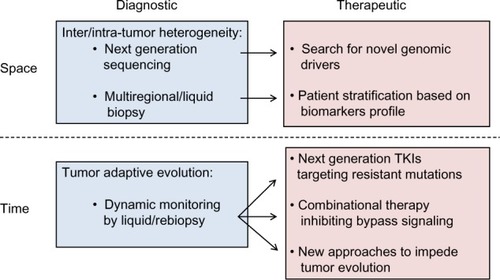Figures & data
Table 1 Distribution of known tumor-driving mutations and chromosomal fusions in advanced NSCLC
Table 2 Temporal tumor heterogeneity and acquired TKI resistance in advanced NSCLC
Table 3 Clinical trials of next-generation TKIs in advanced NSCLC


